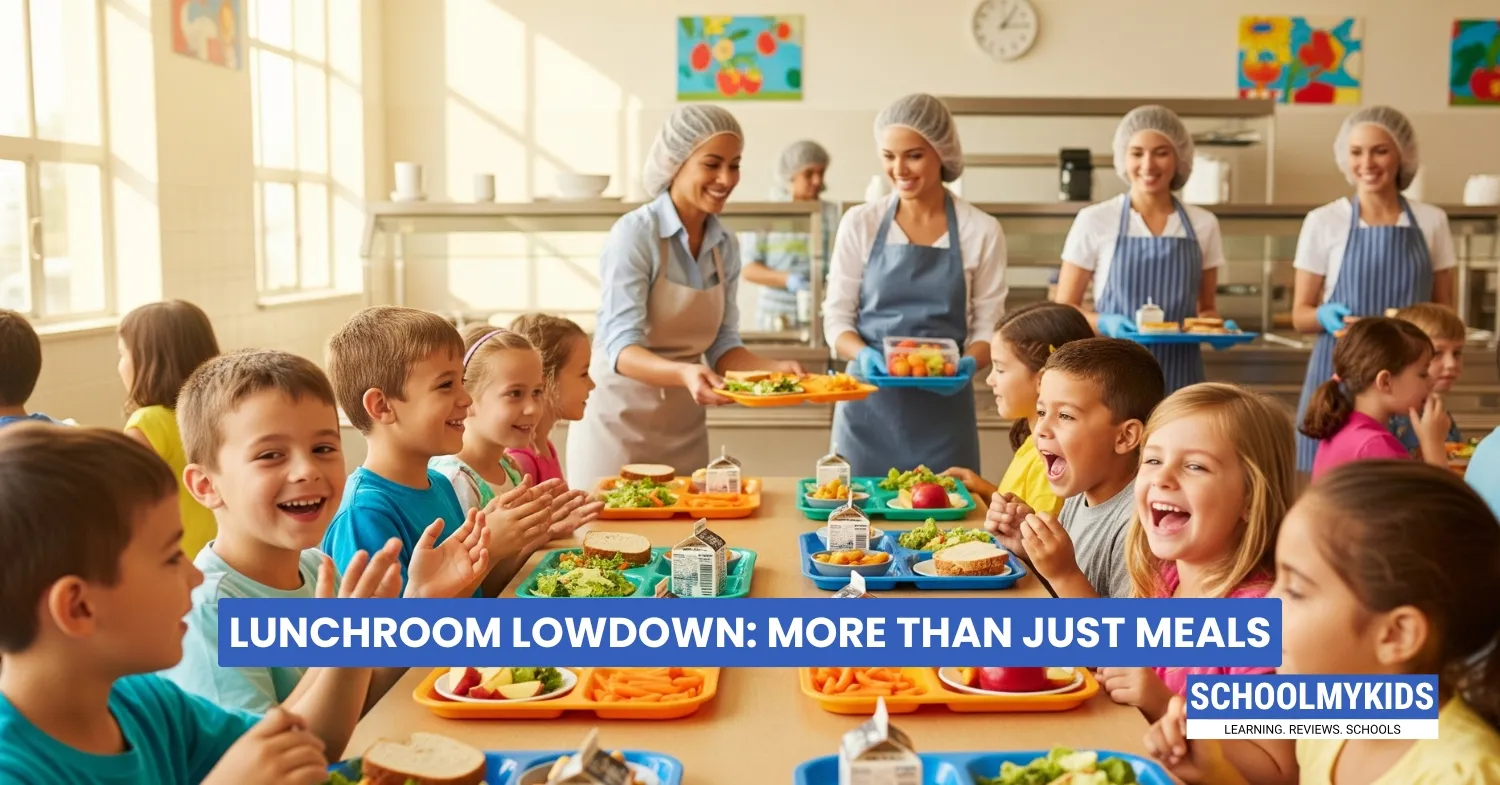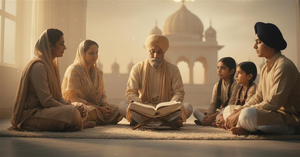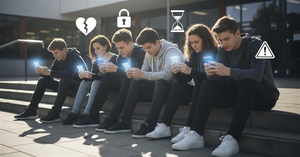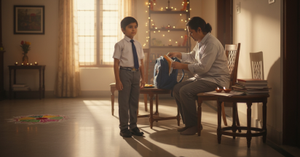Do you remember the taste of your best friend's mom's homemade cookies? Or that time you traded your paratha for their poha, your sandwich for their fruit roll-up? Maybe it was sneaking a bite of someone's achaar (pickle) or sharing your mom's special dal-chawal. Perhaps it was the whispered conversations about weekend plans or the dramatic retelling of yesterday's cricket match. These weren't just lunch breaks; they were the moments that shaped who we became.
Today, as our kids handle a world filled with screens and digital connections, the school lunchroom remains one of the last sacred spaces for real, face-to-face interaction. It's where magic happens between bites of paratha and sips of chilled water.
Why Lunchtime Matters More Than Ever
In our rush to pack the perfect lunch or worry about nutrition labels, we sometimes forget the bigger picture. Yes, feeding our kids matters a lot. But the lunchroom serves up so much more than calories and vitamins. It's a classroom without walls, a social laboratory where children learn skills they'll use for the rest of their lives.
Think about it, where else do kids get 30 minutes of unstructured time to just be themselves? No tests, no assignments, no teachers directing every move. Just pure human connection over shared meals.
The Life Lessons Hidden in Lunch Boxes
Every day, without realizing it, our children are learning invaluable lessons during lunch. They're discovering how to:
- Share and negotiate: "I'll give you half my cookie if you share your grapes." These simple trades teach kids about fairness, compromise, and the art of deal-making.
- Include others: Watching a classmate sit alone and deciding to invite them over teaches empathy and kindness; lessons that textbooks simply can't provide.
- Handle disappointment: When the cafeteria runs out of pizza or when they drop their favorite snack, kids learn resilience in small, manageable doses.
- Celebrate differences: Seeing friends enjoy foods from different cultures opens minds and hearts in ways that broaden their worldview naturally.
Creating Connection Without Forcing It
As parents, we want to help our kids make the most of lunch time, but here's the beautiful thing: we don't need to orchestrate it. The best lunchroom experiences happen naturally. Instead of drilling social skills, we can simply create the conditions for connection to bloom.
Pack foods that naturally invite sharing. Think crackers that come in multiples, fruit that can be split, or homemade treats that others might be curious about. Not because you're trying to make your child popular, but because sharing food has been bringing people together since the beginning of time.
Ask open-ended questions about lunchtime. "Who did you sit with today?" is more meaningful than "Did you eat your vegetables?" Show genuine interest in the social side of their school day, and they'll start sharing more freely.
The Universal Moments That Never Change
Some experiences are timeless. Your child will likely have that moment when someone new sits at their table and nervously unwraps an unfamiliar lunch. They'll probably witness the classic "food trade negotiations" that feel like international diplomacy. They might be part of the group that erupts in giggles over an inside joke, or find themselves comforting a friend who's having a rough day.
Every generation has these moments because the lunchroom never changes. It welcomes everyone, every day, with open arms and the promise of something good. There's something deeply comforting about this continuity, knowing that while technology changes everything else, the fundamental human need for connection over shared meals remains constant.
When Lunchtime Gets Tough
Not every lunchtime will be perfect, and that's okay too. Some days your child might sit alone, feel left out, or come home with stories that break your heart. These challenging moments are also part of the learning process.
Listen without immediately jumping to solutions. Sometimes kids just need to be heard. When they do need guidance, help them brainstorm gentle ways to join conversations or invite others to sit with them. Remind them that everyone feels awkward sometimes, and that being kind to others often comes back to them in wonderful ways.
The Ripple Effect
The friendships built over shared lunches often become the relationships that stay with us through life's ups and downs. The kid who shared their cookies in third grade might be the friend who stands beside them at graduation. The classmate who invited them to sit when they felt alone might become a lifelong confidant.
But even beyond individual friendships, lunchtime teaches children how to be part of a community. They learn to read social cues, respect differences, and find their place in a group, skills that will help them in every relationship they'll ever have.
Conclusion
Children may forget their grades, but they will remember friends made and feelings shared over lunch. These moments teach trust, kindness, and warmth. Even as adults, many of us long for those simple joys, the shared biscuits, the whispered secrets.
You don't need to overthink it. Pack food with love, ask about their day with genuine curiosity, and trust that your child has the natural ability to connect with others. The lunchroom will do the rest.
Remember, the goal isn't to make every lunch perfect or every social interaction smooth. It's to help our kids understand that meals are meant to be shared, that friendship can start with something as simple as "Want to try this?" and that some of life's most important lessons come disguised as everyday moments.
The lunchroom lowdown? It's not really about the food at all. It's about the beautiful, messy, wonderful business of learning to be human together.








Be the first one to comment on this story.